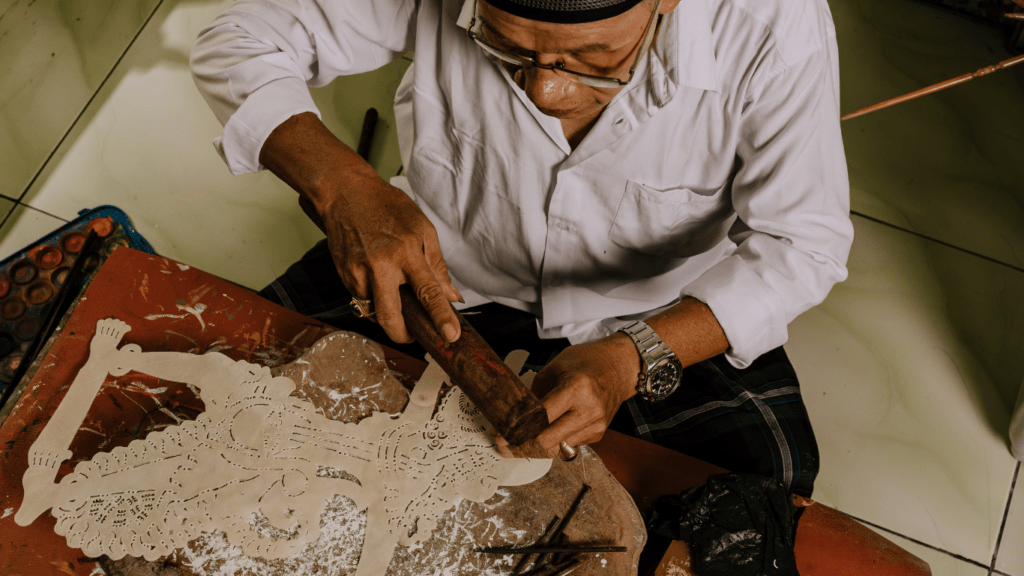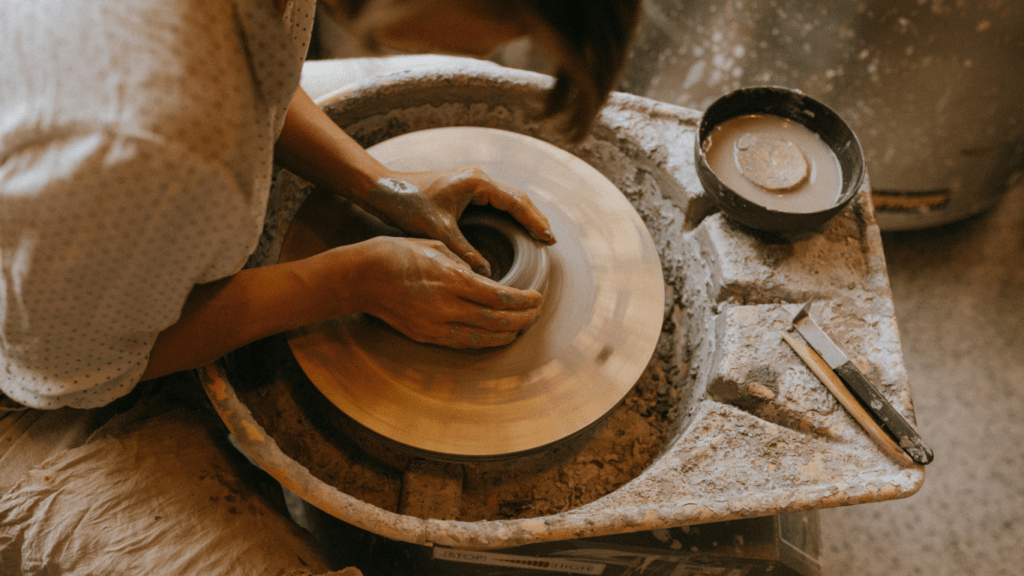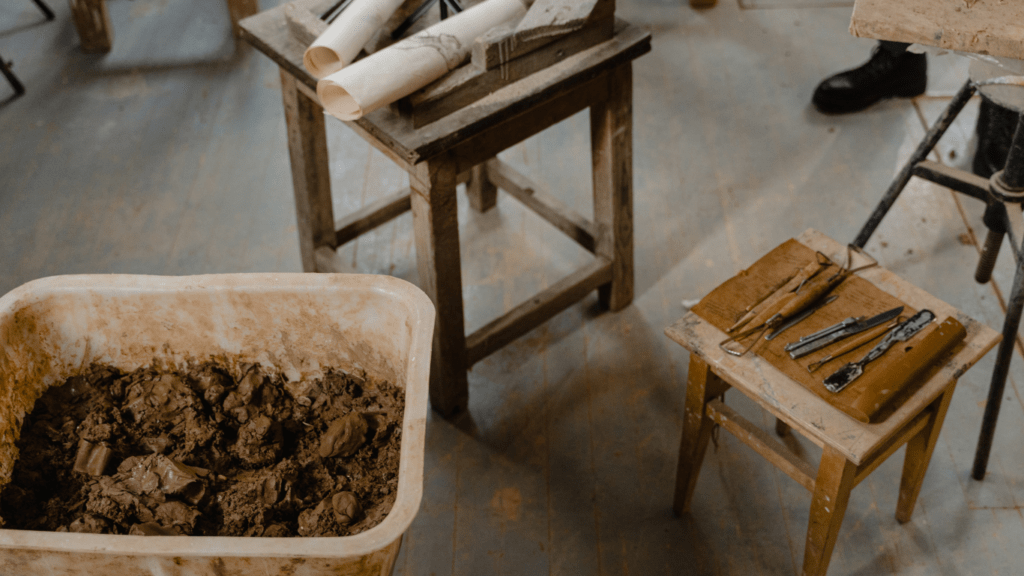As a sculptor myself, I’ve witnessed firsthand how technology is revolutionizing the art of sculpting. From traditional clay modeling to cutting-edge digital sculpting software, the tools available to artists today are reshaping the way we create and perceive sculptures. In this article, I’ll explore the exciting ways in which technology is influencing the future of sculpting.
With the advent of 3D printing, sculptors can now bring their intricate designs to life with unprecedented precision and efficiency. Digital sculpting software like ZBrush has opened up a whole new world of possibilities, allowing artists to manipulate virtual clay with the swipe of a stylus. As technology continues to advance, the boundaries of sculpting are being pushed beyond imagination.
Join me on this journey as we delve into the intersection of art and technology, and discover how these innovations are shaping the future of sculpting in ways we never thought possible.
The Evolution of Sculpting Through the Ages
Sculpting has a rich history that spans civilizations, with techniques and materials evolving over time. Traditional methods such as carving, casting, and modeling have been fundamental to sculpting for centuries. These techniques often involved working with materials like clay, stone, wood, and metal to create masterful pieces of art.
Traditional Techniques and Materials
In the early days of sculpting, artisans relied on basic tools like chisels, hammers, and rasps to carve intricate details into their sculptures. Materials such as marble and bronze were commonly used for their durability and aesthetic appeal. These traditional techniques required immense skill and patience, with sculptures often taking years to complete.
Key Historical Innovations
Throughout history, several key innovations revolutionized the art of sculpting. The invention of the lost-wax casting technique in ancient times allowed sculptors to create complex bronze sculptures with greater precision. During the Renaissance period, artists like Michelangelo embraced new techniques that emphasized anatomical accuracy and emotional expression in their sculptures, pushing the boundaries of artistic realism.
As sculpting continued to evolve, artists began experimenting with new materials and methods to achieve greater creativity and expressiveness in their work. The fusion of traditional sculpting techniques with modern technologies has paved the way for innovative approaches to sculpting, leading to the emergence of digital sculpting tools and techniques that are shaping the future of this ancient art form.
How Technology Is Revolutionizing Sculpting
Technology is fundamentally reshaping the world of sculpting, offering innovative tools and methods that expand creative possibilities and redefine artistic expressions. Let’s explore how advancements in technology are propelling sculpting into a new era of creativity and precision.
- 3D Printing and Digital Sculpting
I’ll explain how 3D printing and digital sculpting have completely transformed the sculpting landscape, allowing artists to bring their creations to life in ways never before possible. Digital sculpting software enables me to sculpt intricate designs in a virtual environment, providing unparalleled freedom and precision. With the advent of 3D printing, these digital creations can now be materialized into tangible sculptures with remarkable detail and complexity. Artists can prototype, refine, and reproduce their sculptures with ease, pushing the boundaries of traditional sculpting methods. - Virtual Reality and Augmented Reality
Exploring the integration of virtual reality (VR) and augmented reality (AR) in sculpting opens up immersive and interactive avenues for artistic expression. By donning a VR headset, I can sculpt and manipulate digital models in a three-dimensional space, offering a heightened sense of presence and scale. AR technologies overlay digital designs onto the physical world, allowing me to visualize and refine sculptures in real-time within their intended environments. These technologies bridge the gap between the physical and digital realms, empowering artists to experiment, iterate, and collaborate in ways that were previously unimaginable.
Impact on Artists and Craftsmanship

Technology has significantly impacted artists and craftsmanship in the field of sculpting, reshaping traditional approaches and opening up new creative avenues. Let’s explore how these changes are influencing the skill sets, training opportunities, and challenges for sculptors in the modern era:
Changing Skill Sets and Training
Incorporating technology into sculpting practices has altered the skill sets required by artists. Today, sculptors not only need expertise in traditional techniques such as carving and modeling but also proficiency in digital sculpting software and 3D printing technology. This fusion of traditional craftsmanship with modern tools demands adaptability and a willingness to embrace innovative methods to stay relevant in the ever-evolving art landscape.
New Opportunities and Challenges
The integration of technology into sculpting has brought forth a myriad of opportunities for artists to explore innovative artistic expressions. With the advent of digital sculpting tools, sculptors can experiment with intricate designs in a virtual environment, allowing for greater precision and creative freedom. Additionally, technologies like virtual reality (VR) and augmented reality (AR) provide immersive platforms for artists to showcase their work and engage with audiences in novel ways.
However, alongside these opportunities, sculptors also face new challenges in navigating the digital realm. Adapting to constantly evolving software and hardware requires continuous learning and upskilling to leverage the full potential of technological advancements in sculpting. Moreover, the digitization of sculpting processes raises concerns about the preservation of traditional craftsmanship and the authenticity of handmade art in an increasingly digitized world.
Case Studies: Artists Who Embrace Technology
In exploring the realm of sculpting shaped by technology, I delve into notable works and experiments as well as public and critical reception to highlight the transformative impact on the art world.
Notable Works and Experiments
Reflecting on artists at the forefront of embracing technology in sculpting, I examine renowned pieces that showcase the seamless integration of traditional techniques with modern innovations. For instance, artists like Tristan Al-Haddad combine 3D modeling software with architectural principles to craft intricate sculptural installations that challenge spatial boundaries. Additionally, the use of robotic arms in sculpting, as seen in the works of Dev Harlan, demonstrates a fusion of technology and artistry, pushing the boundaries of creativity.
Public and Critical Reception
The public and critical reception of technologically-influenced sculpting varies, with some embracing the innovative approach while others raise questions about authenticity and craftsmanship. Artists like Anish Kapoor, known for his large-scale installations created using computer-aided design, have garnered international acclaim for pushing the boundaries of traditional sculpting. However, debates persist within art circles regarding the impact of technology on the essence of sculpting, with discussions centered on the balance between digital precision and manual skill. Despite these debates, the integration of technology continues to influence and shape the future of sculpting, ushering in a new era of artistic expression.
About the Author


 Harrison Lee plays a vital role at Sculpture Creation Tips, where his passion for the art of sculpture is evident in everything he does. With a comprehensive understanding of both classical and contemporary sculpting techniques, Harrison is committed to guiding and educating artists, whether they are just beginning their journey or are seasoned professionals. His approach goes beyond merely teaching technical skills; he encourages artists to explore and develop their unique artistic voices, pushing the boundaries of their creativity. Harrison's expertise and dedication make him an invaluable resource, not just for honing craftsmanship but also for inspiring innovation within the sculpting community. His ability to foster a supportive, dynamic learning environment ensures that every artist he works with is equipped to reach new heights in their artistic endeavors. Harrison's contribution to Sculpture Creation Tips is instrumental in its mission to elevate the art of sculpture and empower artists to achieve their full potential.
Harrison Lee plays a vital role at Sculpture Creation Tips, where his passion for the art of sculpture is evident in everything he does. With a comprehensive understanding of both classical and contemporary sculpting techniques, Harrison is committed to guiding and educating artists, whether they are just beginning their journey or are seasoned professionals. His approach goes beyond merely teaching technical skills; he encourages artists to explore and develop their unique artistic voices, pushing the boundaries of their creativity. Harrison's expertise and dedication make him an invaluable resource, not just for honing craftsmanship but also for inspiring innovation within the sculpting community. His ability to foster a supportive, dynamic learning environment ensures that every artist he works with is equipped to reach new heights in their artistic endeavors. Harrison's contribution to Sculpture Creation Tips is instrumental in its mission to elevate the art of sculpture and empower artists to achieve their full potential.
